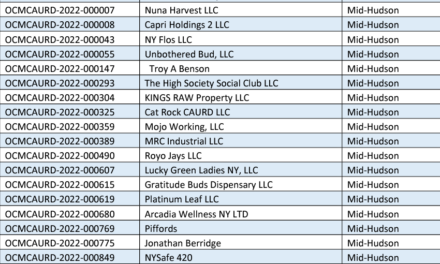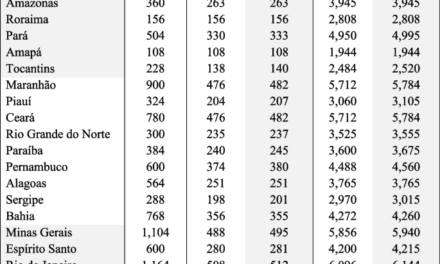
After a 5-year hiatus, the Monarch Quilters group brought their 40th Anniversary Quilt Show to the BVHS gym on Friday June 30 and Saturday, July 1.
“It’s workmanship. We’re showing off things that we created,” said Misty Cronsell, BVMS teacher and one of the show’s co-organizers. “As a quilter, you put it on your bed and you might get a guest or two in your room. You show it off to the ladies that quilt and they can appreciate it. But this shares the love of quilting. It also is quite laborious to make one, and so it’s a way to introduce people to that art as well as get recognized as a quilter.”
“We see these quilts through the years. Sometimes people will bring them to a meeting when we have a show and tell, and so we see some of them,” said Deanna Myers, another of the show’s co-organizers. “We’ve got amazingly talented people. Some of them are just artists. Their use of color is fabulous. For some, it’s the precision that is so amazing.”
“Just being able to do a show again is exciting,” said Luaine Meyers, president of the Monarch Quilters group and boutique chair for the show. “It sparks our creativity when you look at something someone else has done. You realize you never thought of that and you can do it, too.”
“Seeing the look of awe on people’s faces that aren’t members as they see the show, that to me feels good,” said Connie Biederbeck, co-chair for the event’s setup. “We were so impressed with the (set-up) team, because the majority of our helpers have not been in a quilt show before and never seen it done and just had a little training yesterday.”
Given the monumental task of setting up the 117 quilts, including 16 miscellaneous pieces, 31 challenge quilts and 10 pieces in special displays, Cronsell was grateful for how many members arrived to help set up with family members in tow.
“It was so nice to have so many of the members help, and we have over 100 members. We had quite a few members show up with their spouses, and my daughter even came over to help put up quilts, and we’ll probably have an equal helping to take it down,” Cronsell said. That’s what makes us work, it’s everyone coming together.”
The group was formed in 1983 by a handful of women and soon grew to an organization dedicated to promoting the preservation of the great heritage of quilting. Susan Ragan, one of the group’s charter founders, said she and the other charter members started the group after finding common ground in the art.
“I’m an art teacher, by nature. For me, quilting was an extension of that, and I could draw whatever I wanted and then express it in fabric. I’ve had a lot of fun doing that through the years,” she said. One of the older women she knew had the idea to start the group, including Ragan, a local nurse who owned a needlework shop in Salida.
“Like anything, when you get old and you have knowledge, you want to pass it along and you don’t want it to die with you,” Ragan said. “I think that was her goal. So, she started giving some classes. We were in our early 30s when this started, and we soaked it all up and never gave it up.”
Since then, the group has expanded. Now, they have around 100 members throughout the county, as well as some seasonal members.
“Our first show was in the Chaffee County Bank, in the basement,” she said. “There were a couple of years that there was no show because nobody wanted to be the chairman, and then of course COVID intervened. “We’ve had a lot of workshops, a lot of good guest speakers and we’ve done some traveling, some international shows. Houston is where everybody likes to go. They have a wonderful quilt festival every fall and so several others have been to that and have exhibited our quilts there before and won some pretty good prizes.”
Ragan has been quilting for around 45 years and sewing much longer. She still uses the sewing machine she learned on, a Singer Featherweight. She had a number of machine- and hand-quilted pieces in the show, with stitches numbering high in the thousands.
“It used to be when you entered a show that if it wasn’t hand quilted, they might even throw you out of the show,” she said. “That all changed probably in the ‘80s, and now you would be surprised to see hand-quilted quilts when you went to a show. … I used to be very traditional. I liked the old dark fabrics and I liked to make my quilts look like the antique ones did. Now I like totally bright (quilts), so my palette has completely reversed from what it was when I started out.
“It would be boring if I were still doing the same thing that I did 40 years ago,” she said. “Art teachers, we don’t like to do the same as anybody else.”
Ragan, who has taught a few classes at quilt shops in Poncha Springs, Salida, Gunnison and Denver, said it’s important to encourage creativity and unique approaches to the art.
“You don’t want all your students to come out with something that looks like everybody else’s at the end of class. You want everybody’s quilt to be different in some ways, so I’ve always encouraged my students to change things up and use different colors,” she said. “That’s a fascinating thing. When you teach any kind of art or quilting, somebody will come in with colors and fabrics where you’re not sure how they’re gonna work out. But you don’t say a word, and when it’s done, it’s amazing. You can learn so much from your students, and it’s really cool to see what people put together. You might think something is going to be a disaster and it’ll be fabulous.”
Cronsell, whose mother is a commercial artist and father an engineer, said she appreciates the way quilting appeals to both sides of the brain.
“Quilting is both left brain and right brain because you’re using a lot of math to cut the pieces and organize it, but you also have that huge creative process,” she said. “
Some of the quilts in the room were for sale, with some costing hundreds of dollars. Cronsell compared quilting to other artisan works.
“You’re looking at a quilt and saying, ‘Oh, I can just go to Walmart and buy a blanket. Why are you charging $400 for that quilt that’s up there?’ I don’t think people realize the amount of time that goes into making a quilt and how expensive it is to purchase material. So when you’re looking at a quilt like that and you’re thinking, ‘Wow, that seems really pricey,’ it’s workmanship. It’s no different than buying a chair that’s off a manufacturing line versus somebody hand-carving a chair. You’re getting something that’s unique, something that is one of a kind that you’re not going to find anywhere else.”
“From what I learned from my mother, when women had to do all the things that they had to do without the benefit of household appliances, they could take their time on quilts, because it was important to make quilts to keep the family warm,” said Ragan, a fifth-generation quilter. “Instead of trying to rush through it and get it done, they would do all the fancy designs and let their expression come out in the quilt. … They would drag it out and make it as detailed. They didn’t use the fancy ones as much, they would save them for when the preacher came to call or for some special occasion. They would have the everyday quilts and they would make quilts ahead for weddings. It was just a big deal.”
Quilts could also be a show of status.
“I have a quilt that was made only with two fabrics in the 1800s, and that was kind of a show-off quilt. It said, ‘I have enough money that I can go down to the mercantile and buy the fabric for the quilt and I’m not using old clothes for my quilt because I am of such a status that I don’t have to do that,’” she said. “There were a lot of messages in the quilts.”
After the show’s 5-year gap, Ragan was glad to be back for another year, and the 40th anniversary made it all the more special. Even long-time members were amazed they’d hit the 40-year milestone.
“They came in today and looked at that wall and they said, ‘Seriously? This is the 40th anniversary? We had no idea,’” she said. “For everybody, it started when they came here.”
Meyers expressed her gratitude for the team that came together for the show, as well as all those who attended.
“It’s been 6 months of planning and getting that ready,” she said. “We couldn’t do it without the people that come, and that’s why we do it.”
“I attended the show in 2018. When I saw what these people did, I thought I could never be a member because they were so amazing,” said Myers. She joined soon after. “It’s such a great show and such a great opportunity to look at beautiful quilts and to show beautiful quilts that we have got to have it. If that means I have to work on it, then okay!”
In preparation for this year’s show, she dug through scrapbooks documenting the group’s history and put together a timeline display for one of the walls. The group has a long history, she said, of making quilts to donate for Quilts of Valor, sunshine quilts, cuddle quilts for police cruisers and other groups.
“I learned so much about the club and what it has done and how many different things they have participated in,” she said. “There was a picture of Connie donating a check to someone because they had done an internal auction fundraiser to donate it to different things. They’ve made cuddle quilts, quilts for the police cars and have just participated in so many ways in the community.”
Myers, Beiderbeck and Meyers encouraged beginners to get involved, as much of their work is driven by a desire to preserve the art of quilting. Monthly group meetings often offer the chance to take classes, practice with a block of the month and learn from more skilled quilters. Cronsell hopes to reestablish the middle school sewing club.
“There’s always somebody that knows more than I do that I want to learn from,” Meyers said. “I learned something every single time we have a meeting.”
“We like seeing people start, and people in this club have said at various times how much they appreciated the mentorship that they were given when they were starting,” Myers said. “People love to share that. So if you’re young and you wanted to come, we would be thrilled.”
“Our mission is to share quilts with others and to encourage them, and so that’s hopefully what we’re doing for the next generation,” Meyers said. “We’re very thankful to the ones that have gone before. All of us have family members that encouraged quilting or were quilters, but we wouldn’t have a group here today if it weren’t for those founding members.”
“Everyone’s welcome,” Biederbeck said. “Even if you’ve never sewed, we’ll help you with that.”
“We made (admissions) free for 18 and under so we could bring in young kids,” Cronsell said. “This is a dying art, and I’m saddened by that. The more young people we can get engaged in this art, the more it will continue on to the next generation.”
Visit http://monarchquilters.weebly.com/ for more information about the group and their upcoming meetings.




